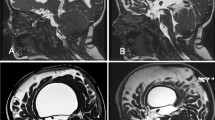Abstract
Background
The cerebrospinal fluid (CSF) shunt remains an important ongoing management problem in myelomeningocele (MMC) patients. We reviewed the long-term shunt treatment outcome in a prospectively followed group of MMC patients from a single institution.
Method
Patients prospectively entered into a hydrocephalus database with a diagnosis of MMC from the years 1987 to 1996 were selected. All data was verified from the medical records and additional details about the shunt surgery were collected. The outcome of shunt failure was categorized as shunt obstruction, shunt infection, presence of loculated ventricles, overdrainage, and other. All deaths were recorded and causation identified. Univariate analysis for shunt failure risk factors was accomplished using Log rank statistics. Multivariable analysis was performed for each repeated failure level using a conditional Cox regression model.
Results
One hundred and twenty (64%) out of 189 MMC patients experienced a first shunt failure with a median time of 303 days; 29 (24%) of the failures were due to shunt infection (the procedure infection rate being 15%). Sixty-one patients experienced a second shunt failure, 38 a third and 36 had four or more. Multivariable analysis of risk factors failed to demonstrate any clear risk factors for either first or subsequent shunt failure. Fifteen patients died, 13 from either shunt or Chiari 1 complications.
Conclusion
Shunt complications remain an important cause of morbidity and mortality in MMC patients, particularly shunt infection.
Similar content being viewed by others
References
Allison PD (1995) Survival analysis using the SAS system: a practical guide. SAS Institute, North Carolina, pp 223–253
Amacher AL, Wellington J (1984) Infantile hydrocephalus: long-term results of surgical therapy. Childs Brain 11:217–229
Caldarelli M, Di Rocco C, La Marca F (1996) Shunt complications in the first postoperative year in children with meningomyelocele. Childs Nerv Syst 12:748–754
Choux M, Genitori L, Lang D, Lena G (1992) Shunt implantation: reducing the incidence of shunt infection. J Neurosurg 77:875–880
Cook RCM (1971) Problems of the newborn. Spina bifida and hydrocephalus. Br Med J iv:796–799
Di Rocco C, Marchese E, Velardi F (1994) A survey of the first complication of newly implanted CSF shunt devices for the treatment of non-tumoral hydrocephalus. Childs Nerv Syst 10:321–327
Drake JM, Kestle J, Pediatric Hydrocephalus Treatment Evaluation Group (1996) Rationale and methodology of the multicenter pediatric cerebrospinal fluid shunt design trial. Childs Nerv Syst 12:434–447
Drake JM, Kestle JRW, Milner R, Cinalli G, Boop F, Piatt J, Haines S, Schiff S, Cochrane D, Steinbok P, MacNeil N, et al (1998) Randomized trial of cerebrospinal fluid shunt valve design in pediatric hydrocephalus. Neurosurgery 43:294–303
Epstein NE, Rosenthal AD, Sito J, Osipoff M (1985) Shunt placement and myelomeningocele repair: simultaneous vs sequential shunting. Review of 12 cases. Childs Nerv Syst 1:145–147
Hahn YS (1994) Use of the distal double-slit valve system in children with hydrocephalus. Childs Nerv Syst 10:99–103
Heimburger R (1972) Early repair of myelomeningocele (spina bifida cystica). J Neurosurg 37:594–600
Lawless JF, Nadeau, Cook RJ (1997) Analysis of mean and rate functions for recurrent events. In: Lin DY, Fleming TR (eds) Proceedings of the 1st Seattle Symposium in Biostatistics. Springer, New York Berlin Heidelberg, pp 37–49
Lazareff JA, Peacock W, Holly L, Ver Halen J, Wong A, Olmstead C (1998) Multiple shunt failures: an analysis of relevant factors. Childs Nerv Syst 14:271–275
Liptak GS, Masiulis BS, McDonald JV (1985) Ventricular shunt survival in children with neural tube defects. Acta Neurochir 74:113–117
Lorber J (1973) Early results of selective treatment of spina bifida cystica. Br Med J iv:201–204
Lumenta CB, Skotarczak U (1995) Long-term follow-up in 233 patients with congenital hydrocephalus. Childs Nerv Syst 11:173–175
Matson DD (1968) Surgical treatment of myelomeningocele. Pediatrics 42:225–227
Miller P, Pollack I, Pang D, Albright L (1996) Comparison of simultaneous versus delayed ventriculoperitoneal shunt insertion in children undergoing myelomeningocele repair. J Child Neurol 11:370–372
Parent AD, McMillan T (1995) Contemporaneous shunting with repair of myelomeningocele. Pediatr Neurosurg 22:132–136
Piatt JH, Carlson CV (1993) A search for determinants of cerebrospinal fluid shunt survival: retrospective analysis of a 14-year institutional experience. Pediatr Neurosurg 19:233–242
Prentice RL, Williams, BJ, Peterson AV (1981) On the regression analysis of multivariate failure time data. Biometrika 68:373–379
Stark GD, Drummond MB, Poneprasert S, Robarts FH (1974) Primary ventriculo-peritoneal shunts in treatment of hydrocephalus associated with myelomeningocele. Arch Dis Child 49:112–117
Tuli S, Drake JM, Lawless J, Wigg M, Lamberti-Pasculli M (2000) Risk factors for repeat cerebrospinal shunt failures in pediatric hydrocephalus. J Neurosurg 92:31–38
Acknowledgements
Acknowledgement is given to J. Lawless (BSc, MSc, Phd) and M. Wigg (BSc, MSc), from the Department of Statistical and Actuarial Sciences at the University of Waterloo, for statistical guidance.
Author information
Authors and Affiliations
Corresponding author
Rights and permissions
About this article
Cite this article
Tuli, S., Drake, J. & Lamberti-Pasculli, M. Long-term outcome of hydrocephalus management in myelomeningoceles. Childs Nerv Syst 19, 286–291 (2003). https://doi.org/10.1007/s00381-003-0759-4
Received:
Published:
Issue Date:
DOI: https://doi.org/10.1007/s00381-003-0759-4




